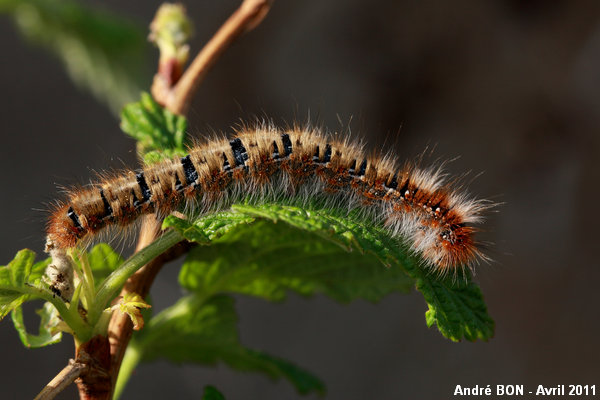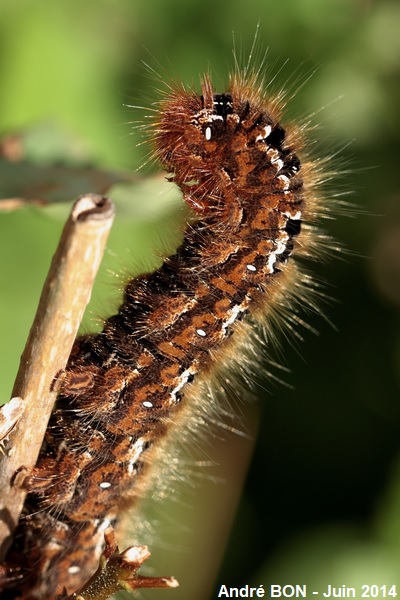


| Oak Eggar (Lasiocampa quercus (Linnaeus, 1758)) |



|
|
Scientific name: Lasiocampa quercus (Linnaeus, 1758) Common name: Oak Eggar French name: Bombyx du chêne, Minime à bandes jaunes, Bombyx du genêt. Order: Lepidoptera Suborder: Heterocera Family: Lasiocampidae Subfamily: Lasiocampinae Wingspan: 45-75 mm. Males are smaller than females. Biotope: Open woodlands, damp places and marshes. Geographic area: Europe, Canary Islands, North Africa, Asia Minor, Caucasus, Russia. Flight time: June to September. Number of generations : 1 Caterpillar: At the first development stages, this caterpillar is black with yellowish patches. It is rather brightly coloured. It can reach a length of 80 mm when in the final stage. Spaces between segments are black. It shows a white lateral interrupted line and dorsal tufts of brownish and grey hairs. Host plant: Many trees and shrubs including Blackthorn (Prunus spinosa), Bramble Bush (Rubus fruticosus), Common Broom (Cytisus scoparius), European blueberry (Vaccinium myrtillus), Bog Bilberry (Vaccinium uliginosum) and Common Heather (Calluna vulgaris). |
The Oak Eggar has got its common name by the fact that the chrysalis is acorn-shaped and not by having oaks as host plants. Males are generally dark chestnut brown with a bright yellow post-median stripe. The fore wings bear a white discoidal spot. Females are paler a vary from ochre to pale brown. The post-median stripe is not so sharply marked. Males fly, rather fast, during the day, looking for females. Females are mainly active during the night. The eggs are dropped during the flight. These moths do not feed and live on the stock of energy stored at the caterpillar stage. The Oak Eggar over winters as a caterpillar. |
| [To know more about the Oak Eggar] [Next picture] [Top] |

|
This caterpillar was observed on a Raspberry Bush. |
| [To know more about the Oak Eggar] [Next picture] [Previous picture] [Top] |

|
Upper side view. |
| [To know more about the Oak Eggar] [Previous picture] [Top] |

|
Close-up view of the head. |